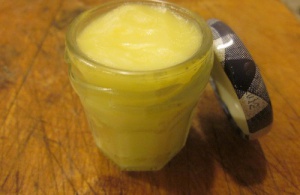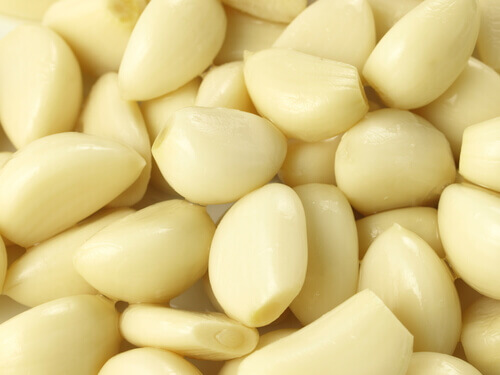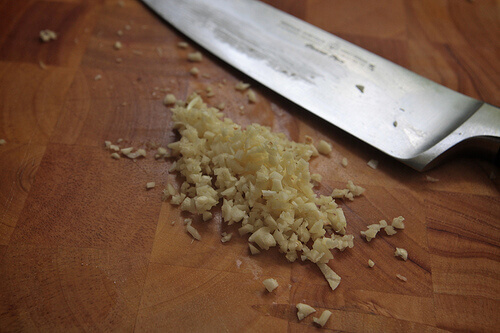Learn How to Make an Antibiotic Garlic Ointment at Home

Garlic is a widely used substance throughout the world, though not everyone is aware of its medicinal properties. Through the centuries, natural medicine has used this plant in treatments. Old healers discovered that it contains properties that help combat infections from fungi and bacteria. Here we teach you how to make an antibiotic garlic ointment at home.
Garlic has many benefits when you crush it, thereby releasing a substance called allacin. This ingredient is even used in some medicines produced by pharmaceutical companies. In this article, we’ll teach you how to prepare an excellent antibiotic garlic ointment using common ingredients.
Use this antibiotic garlic ointment at home

In addition, once ingested, garlic helps to generate healthy bacterial flora in your intestines. It can also counteract some of the negative effects of oral medications on the stomach.
For infections caused by fungi, such as athlete’s foot, you can try garlic paste as a good first step to treatment. Remember that when clothing comes in contact with fungal infections, though, it’s best for you to discard it after treatment.
Finally, garlic has painkilling properties. It’s can also be used as an antibiotic for the ears. You can apply it there gently with a cotton swab.
How to prepare the antibiotic garlic ointment
To have you own batch of this multi-use paste, you need only remember the “3 by 3 Rule.”
The paste consists of three ingredients. These are virgin coconut oil, extra virgin olive oil, and fresh garlic. In order to make the paste, you’ll need three heaping tablespoons of each ingredient.
Instructions
Put the coconut oil in a small pan over low heat,. Then add the olive oil and mix the two together smoothly. When the two oils are hot and blended, add in the garlic bit by bit, sautéeing it lightly.
After a short while, remove it from the heat. Put the mixture in a blender or grind it with a mortar and pestle or coffee grinder. When it’s smooth, strain the substance you produced and put it into a jar. It should now be ready.
At this point, you’ll have your own antibiotic ointment and painkiller! Keep it in the refrigerator. It’ll last up to two weeks if you mix it occasionally.
Some more information

When the mixture is freshly made, it’ll have a milky color. However, it will slowly become a softer and thicker. After several hours of refrigeration, you will discover that it’s turned into a denser, spreadable balm.
If you have reached this point in the article, it means you’re ready to try out this ancient natural remedy. Now there’s only one piece of advice left: in spite of the coconut oil, the garlic odor will remain, so try to use it only when you play to be at home.
Be forewarned that the odor can also get into your clothing. You should therefore choose clothing to use only for the treatment and make sure to not mix it with other laundry when you wash.
And there you have it, you have been able to see that it is very easy to prepare this homemade garlic antibiotic ointment. Don’t delay in preparing some, as it’s a great natural remedy.
Image courtesy of Laureipsum
This text is provided for informational purposes only and does not replace consultation with a professional. If in doubt, consult your specialist.








